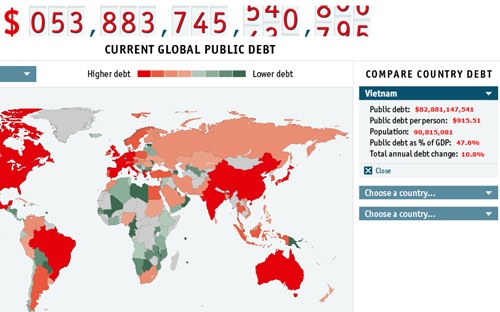|
Economists question
validity of statistics on public debt
The statistics released by the Ministry of
Finance and relevant agencies about

The State Audit Office of Vietnam (SAO) stated at a
press conference last week that there were some problems in the statistical
work about the public debt.
Chief State Auditor Nguyen Huu Van, in his April report
to the National Assembly’s Steering Committee, pointed out that the Ministry
of Finance (MOF) overcounted and missed some loans and debentures.
The SAO’s auditing report showed that the
The figure of VND1.632 trillion is not big, but the gap
between the statistics in the SAO and MOF reports was wide enough to make the
dubious statistics seem even more unreliable.
A representative of SAO admitted at the press
conference that auditing public debts was a very unfamiliar work in Vietnam,
and that the audit results could not be absolutely accurate because a public
debt audit is just one part of the annual state budget audit program.
He said that the SAO was still creating a procedure to
be specifically applied to the public debt audit.
In mid-July, economists present at a workshop on public
debts held by the National Assembly’s Finance and State Budget Committee,
warned about
MOF and the government have many times said that
A report from MOF showed that as of December 31, 2013,
However, the economists at the workshop pointed out
that the figures do not truly reflect the public debt situation because MOF
did not count other kinds of loans, including state-owned enterprises’ debts.
Dr. Vu Dinh Anh from the
Anh cited The Global Debt Clock (GDC) as reporting that
as of the end of March 2014, every Vietnamese had borne a debt of VND20
million ($887.51).
GDC showed that
Dr. Trinh Tien Dung, former assistant to the UNDP
Vietnam Country Director, gave two different figures about
Public debts, if calculated in accordance with the
Public Debt Management Law, account for 54.4 percent of
Under the law, public debts comprise government debts,
government-guaranteed debts and local authorities’ debts.
However, if
TBKTVN
|
Thứ Sáu, 1 tháng 8, 2014
Đăng ký:
Đăng Nhận xét (Atom)
Không có nhận xét nào:
Đăng nhận xét